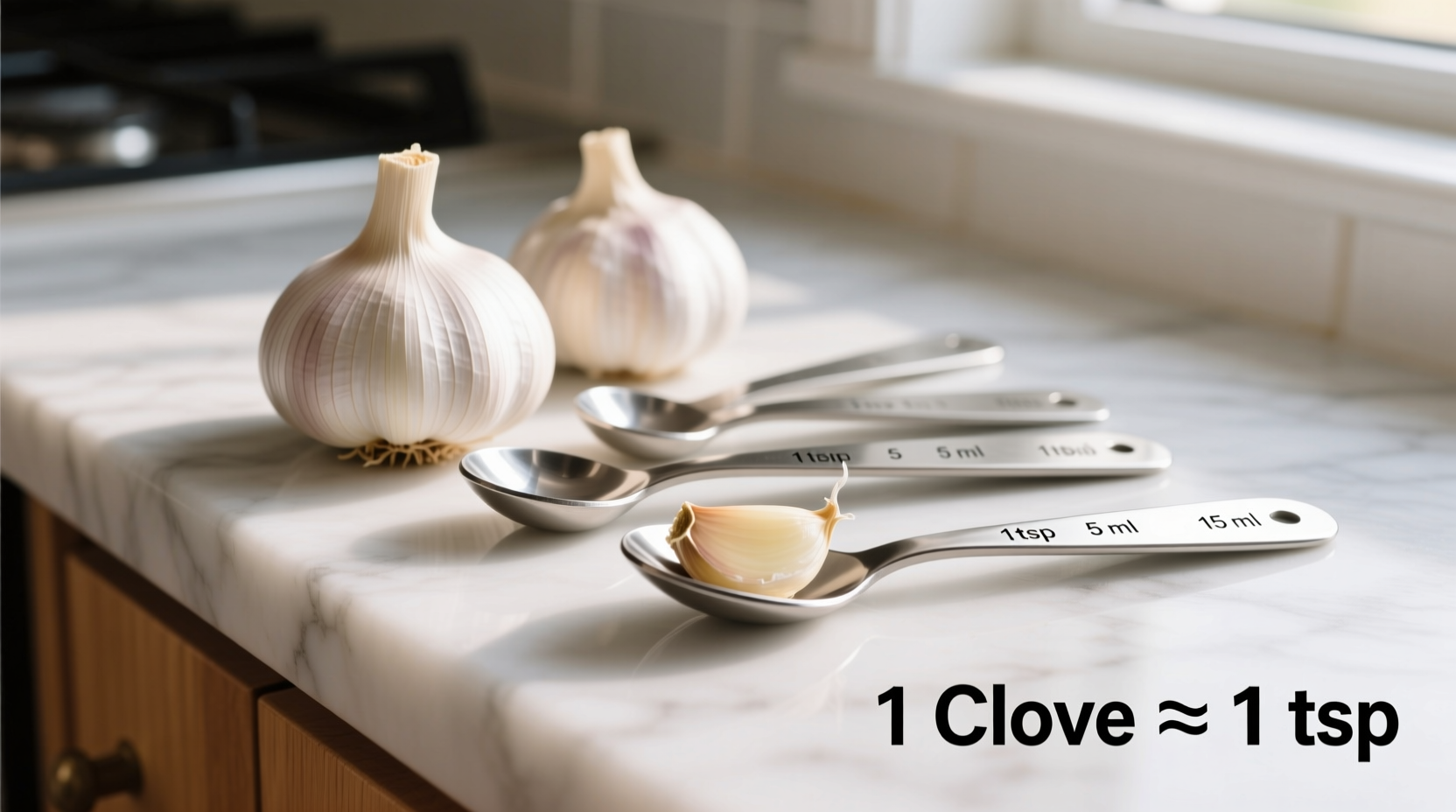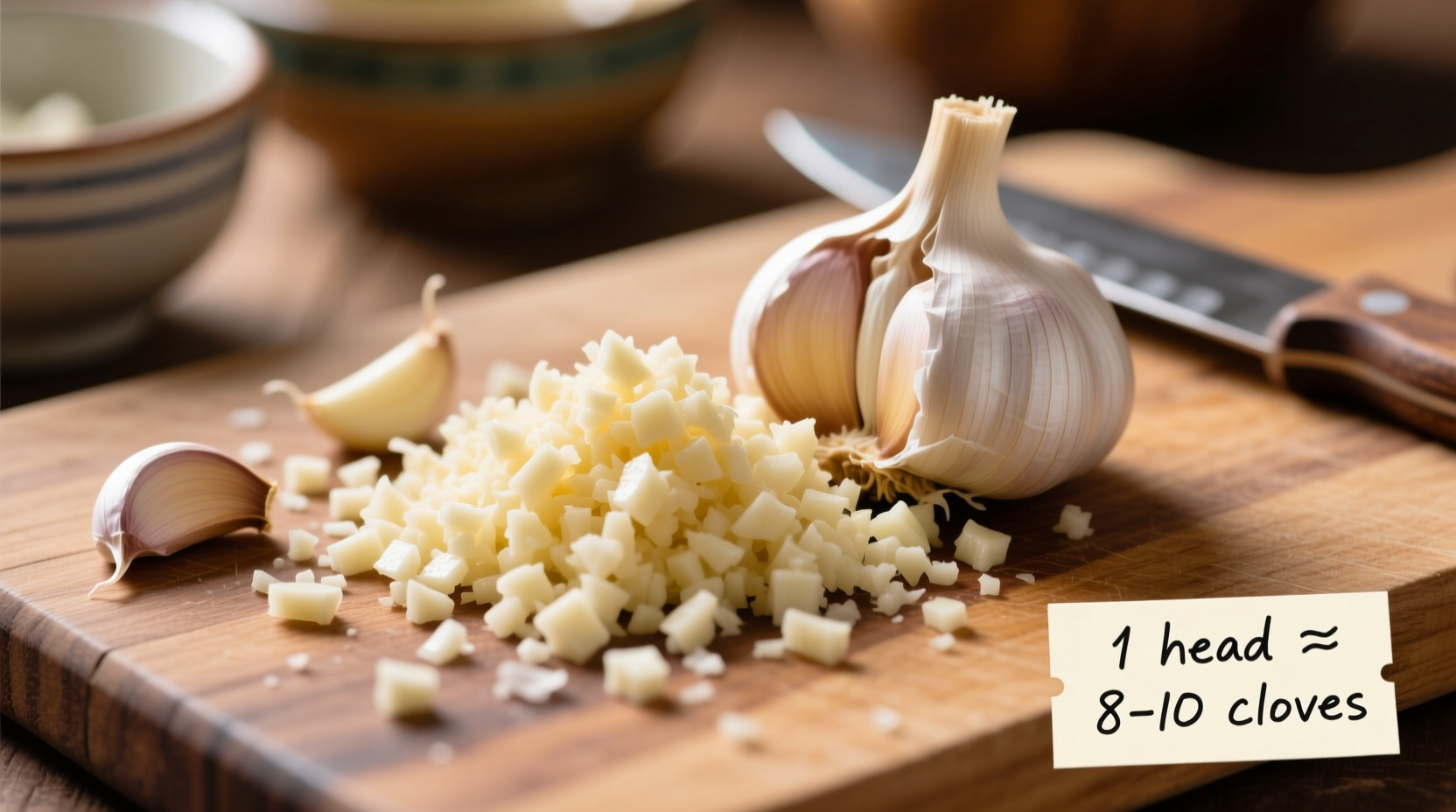Understanding Garlic Conversions for Perfect Cooking Results
Getting garlic measurements right can make or break your dish. Whether you're following a recipe that calls for minced garlic but only have whole cloves, or vice versa, understanding the precise conversion saves time and ensures flavor perfection. Let's break down exactly how many cloves equal minced garlic measurements.
Garlic Conversion Fundamentals
Garlic measurements aren't one-size-fits-all because cloves vary dramatically in size. A single clove from a supermarket bulb might be twice the size of one from a farmer's market heirloom variety. This variation directly impacts your conversion calculations.
| Whole Garlic Cloves | Minced Garlic Equivalent | Chopped Garlic Equivalent |
|---|---|---|
| 1 small clove (0.5" diameter) | 1/4 teaspoon | 1/2 teaspoon |
| 1 medium clove (0.75" diameter) | 1/2 teaspoon | 1 teaspoon |
| 1 large clove (1" diameter) | 3/4-1 teaspoon | 1 1/2 teaspoons |
| 3 medium cloves | 1 1/2 teaspoons (1/2 tablespoon) | 1 tablespoon |
| 6 medium cloves | 1 tablespoon | 2 tablespoons |
Why Garlic Size Matters More Than You Think
According to the USDA National Nutrient Database, garlic clove weight varies from 3-14 grams depending on variety and growing conditions. This 4.5x difference means blindly following "1 clove = 1/2 tsp minced" could lead to significantly under- or over-seasoned dishes. Professional chefs at the Culinary Institute of America recommend weighing garlic when precision matters, with 5 grams being the standard medium clove weight (USDA FoodData Central).

Practical Measurement Techniques for Home Cooks
When you don't have a kitchen scale, use these chef-approved methods:
Visual Assessment Method
- Small cloves: About the size of your pinky fingertip
- Medium cloves: Roughly the size of your index fingertip
- Large cloves: Approaching the size of a walnut
Container Method
Fill a 1/4 teaspoon measure with minced garlic. If it takes two level scoops to cover one clove lying flat, you've got a medium clove. Fewer scoops indicate larger cloves.
When Precision Really Matters
Garlic measurement accuracy becomes critical in specific cooking scenarios:
- Delicate sauces (like aioli or beurre blanc) where garlic can overpower other flavors
- Fermented preparations (kimchi, pickles) where garlic affects pH balance
- Raw applications (salad dressings, pesto) where garlic's pungency isn't mellowed by cooking
- Medical dietary restrictions where precise garlic intake matters for certain conditions
For everyday cooking like pasta sauces or roasted vegetables, the standard conversion works well enough. But for specialty diets or professional results, precise measurement makes a noticeable difference.
Pro Tips for Maximizing Garlic Flavor
The way you prepare garlic affects both yield and flavor intensity:
- Let minced garlic rest: Wait 10 minutes after mincing before cooking to develop maximum flavor compounds
- Size matters for cooking time: Finely minced garlic burns faster than coarsely chopped
- Freeze excess: Puree leftover minced garlic with oil and freeze in ice cube trays for future use
- Adjust for age: Older garlic bulbs produce smaller cloves with more concentrated flavor
Common Mistakes to Avoid
Even experienced cooks make these garlic measurement errors:
- Assuming all cloves from one bulb are identical in size
- Not accounting for how tightly garlic is packed in the measuring spoon
- Using jarred minced garlic without adjusting for its higher moisture content
- Forgetting that roasting garlic reduces its volume by about 30%
Special Considerations for Different Garlic Forms
Not all garlic starts as fresh cloves. Here's how other forms compare:
- Garlic powder: 1/8 teaspoon powder = 1 fresh clove (much more concentrated)
- Garlic salt: 1/4 teaspoon = 1 fresh clove (contains 3 parts salt to 1 part garlic)
- Pre-minced jarred garlic: 1 teaspoon = 1 medium clove (check sodium content)
- Roasted garlic: 1 large roasted clove = 2 raw medium cloves in flavor intensity











 浙公网安备
33010002000092号
浙公网安备
33010002000092号 浙B2-20120091-4
浙B2-20120091-4